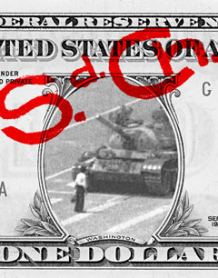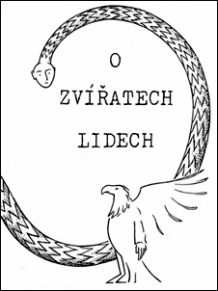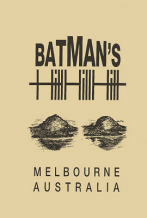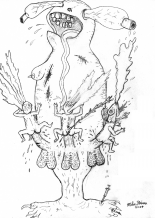| Revista Umělec 2002/3 >> Blurred Vision (Jakub Špaňhel) | Lista de todas las ediciones | ||||||||||||
|
|||||||||||||
Blurred Vision (Jakub Špaňhel)Revista Umělec 2002/301.03.2002 Václav Hájek | Perfil | en cs |
|||||||||||||
|
"Jakub Špaňhel, a recent graduate of Milan Knížák’s studio at Prague’s Fine Arts Academy, is currently working on a series of paintings portraying church interiors. He exhibited four of these, titled Baroque, at this year’s FAA graduation exhibition at Veletržní Palace.
Execution of theme has over time gone through apparent changes; it appears that the theme itself is merely a premature motive for examining the formal possibilities of painting. Since the initial chiaroscuro concept, Špaňhel has moved on to an ever-more abstract record of a gestural event. He tries out various painterly methods within certain limits, represented mainly by almost total monochrome, at times broken only by tones of other colors. Most of his paintings, large-format works made with thin acrylic color, are rendered in hues of black and white, sometimes with the addition of gold. Although Špaňhel gradually works up to expressive, calligraphic presentation — tempting one to think that the aim of his painting is self-expression — we cannot help feeling that his visual perception is not merely a secondary element to the works, or a mere trigger impulse, a fuse for making art. Similarly we don’t think that the motif could be substituted, replaced with any other topic. On the contrary, the motif clearly responds to certain expectations relating to Central European or Prague cultural territory, for which a hefty dose of genius loci is required. However, Špaňhel’s paintings do not accommodate tourists’ demand in the sense that they could be sold on Charles Bridge. On the contrary, they would most likely be utterly impossible to sell, owing to their minimal sign quality. They are all the more minimal as their calligraphic “abstract/ expressive” tracting increases. In no way could they work as a logo for tourist attractions and serve as photographs or souvenirs. Unlike the face of Franz Kafka and the Prague Castle silhouette, Špaňhel’s paintings would always look like a disfigured stain on t-shirts and postcards. Here we also come across the motif, which might be understood as extension of the late-impressionist discovery of a certain type of vision — a uncomprehending, indistinguishing vision. Špaňhel basically does not understand what is happening in his visual perception. He passes on no sign information about the character of space or the disposition and function of objects within this space. This vision is blurred, lacking rational explanation of the situation. Špaňhel gradually abandonons even elementary information about distribution of light and shadow, which has played an important role in the painterly sketch since the advent of modern representation and is present in all representative images, handmade or otherwise. Yet the visual perception represented here is significant, not only due to its function as a fuse for an expressive event, but also because of its role in the process of non-description, uncertainty and provocation. Špaňhel’s use of spray paint also suggest that he is a vandal, a provocateur perhaps linked to the tradition of the Chinese eccentrics. This again confirms his interest in calligraphy. He impairs the conventional, i.e. semantic quality of everyday thinking and seeing, whose clarity and transparency are more or less commercial instruments. He confronts us with a chaotic state of reality derived from an uncomprehending perception of churches’ dramatic interiors. Špaňhel’s choice of theme and his artistic strategy find a number of parallels in other artistic material. Expressive development of a certain theme aiming to capture individual emotions can be found in the aforementioned abstract expressionism (de Kooning, etc.). Blurred vision and working with the “vandal” stain and fluidity of colors is present in works by the neue wilde. Fascination with the darkened atmosphere of church interiors appears in the Czech Informel movement. We should also mention truly Baroque chiaroscuro. Work with such a register suggests Špaňhel’s attempt to map possible approaches to his task. However, it is no accident that this register includes mainly methods working with disrupting the form, with shapelessness. Špaňhel is not imitating classical style; on the contrary, his style is one of disharmony. He disrupts sign comprehensibility and formal solidity, replacing it with multiple meanings and fluidity. The point of the blurring strategy does not lie in self-expression but rather in an attempt to show certain possibilities of reality, possibilities of seeing the world as a riddle — as dense, shapeless impression. Špaňhel has arrived at this by following both traditional and modern painterly methods set against a background of cult location. "
01.03.2002
Artículos recomendados
|
|||||||||||||
|
04.02.2020 10:17
Letošní 50. ročník Art Basel přilákal celkem 93 000 návštěvníků a sběratelů z 80 zemí světa. 290 prémiových galerií představilo umělecká díla od počátku 20. století až po současnost. Hlavní sektor přehlídky, tradičně v prvním patře výstavního prostoru, představil 232 předních galerií z celého světa nabízející umění nejvyšší kvality. Veletrh ukázal vzestupný trend prodeje prostřednictvím galerií jak soukromým sbírkám, tak i institucím. Kromě hlavního veletrhu stály za návštěvu i ty přidružené: Volta, Liste a Photo Basel, k tomu doprovodné programy a výstavy v místních institucích, které kvalitou daleko přesahují hranice města tj. Kunsthalle Basel, Kunstmuseum, Tinguely muzeum nebo Fondation Beyeler.
|



































 We Are Rising National Gallery For You! Go to Kyjov by Krásná Lípa no.37.
We Are Rising National Gallery For You! Go to Kyjov by Krásná Lípa no.37.
Comentarios
Actualmente no hay comentariosAgregar nuevo comentario